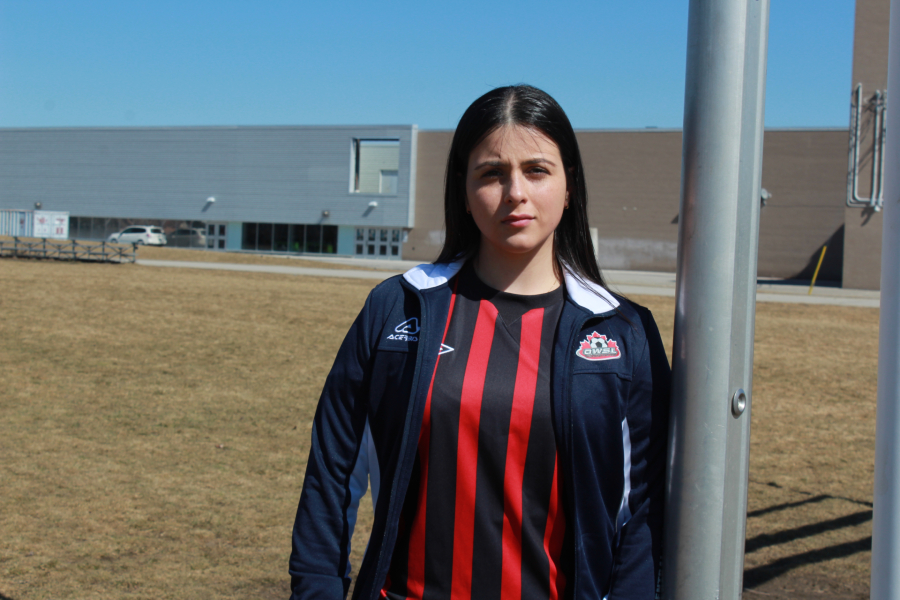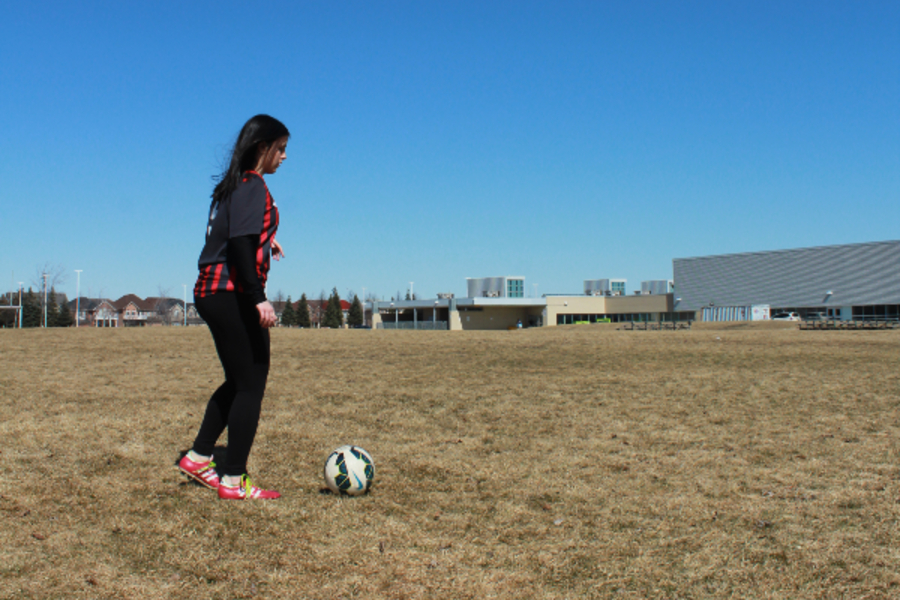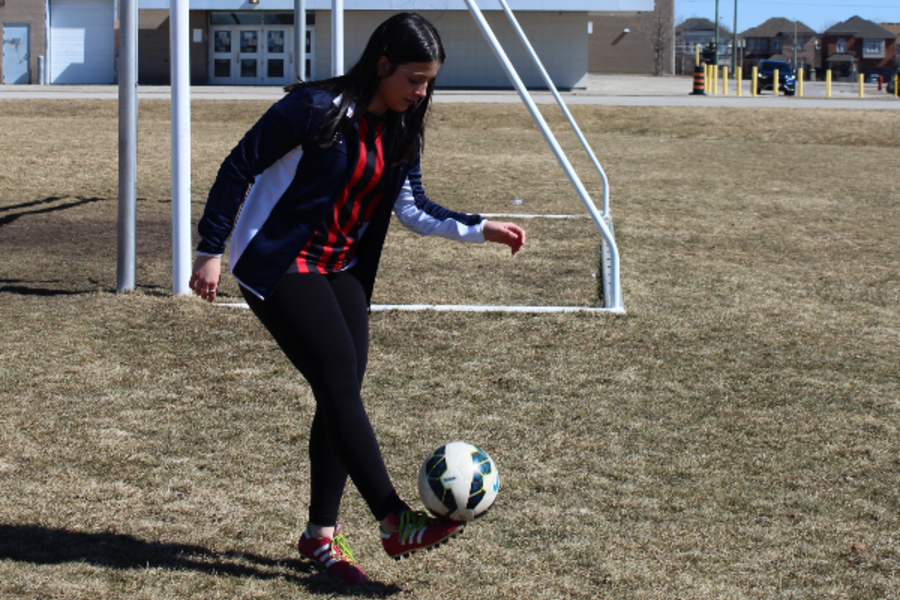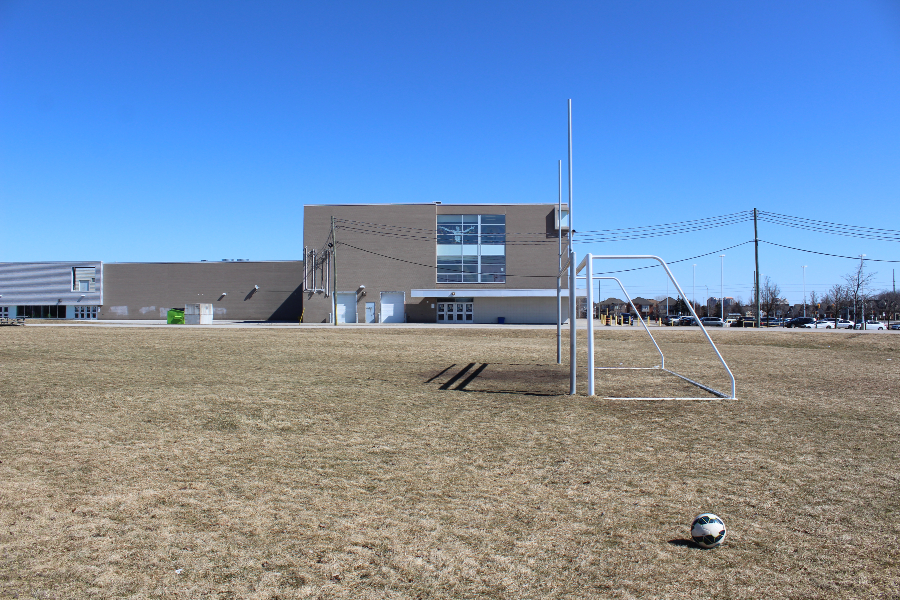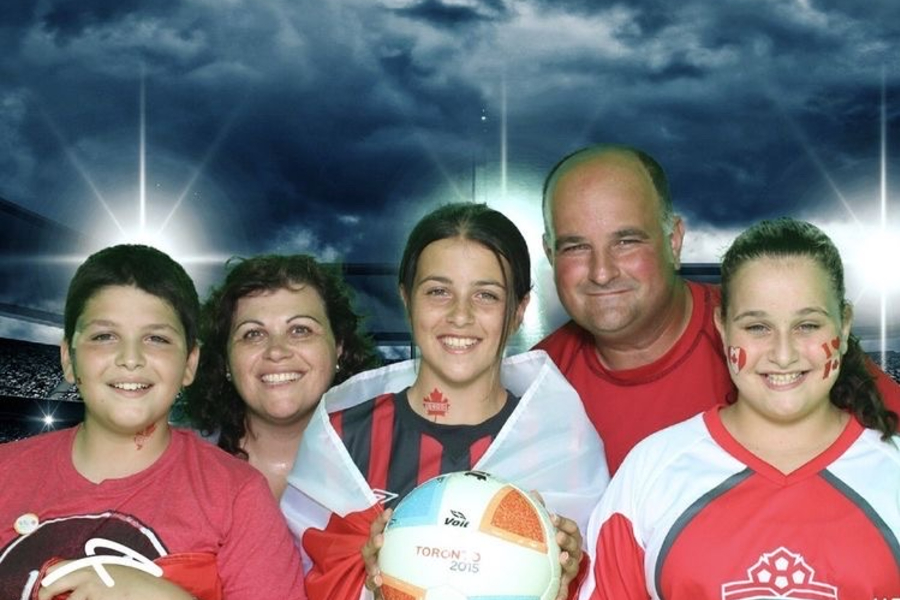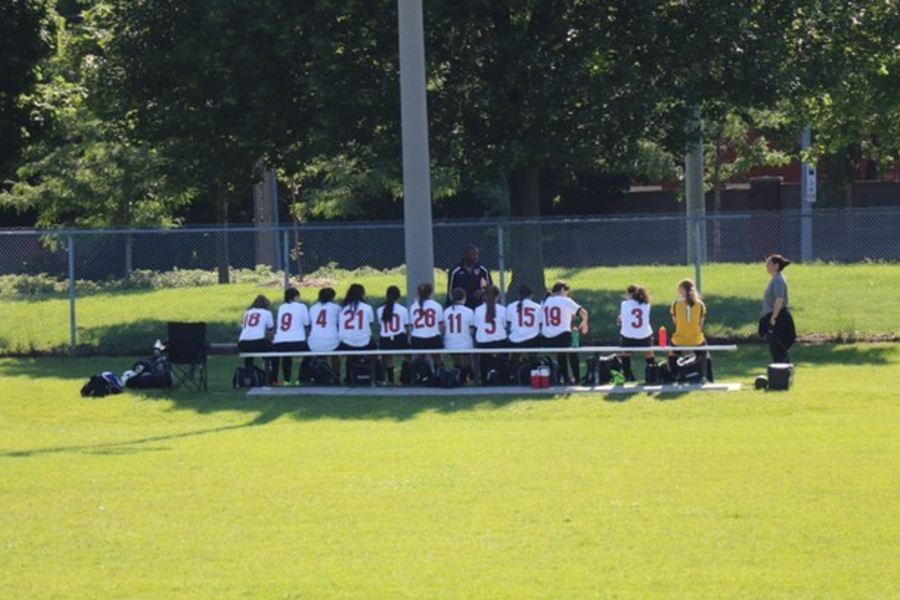By Rachel Aversa
Fans, friends and family cheer from the sidelines as both soccer teams race up and down the pitch, struggling to gain control of the play. A wingback drives the ball, sending the bomb flying through the air.
As it rockets down, it smacks into a player’s head and ricochets to the ground. The chase continues.
Eva Di Nallo wobbles, trying to regain her focus. The blow to her head leaves her instantly sick to her stomach. She knows this feeling. She knows she has another concussion.
Although Di Nallo retells this story, it is not something she remembers. This head injury makes eight concussions in about a five-year span. She finds it hard to piece together how she sustained many of her head injuries so she relies on her family to help her remember.
She started playing house league soccer when she was six years old. As her skills progressed, she developed the desire to play at a higher level. She played competitively and continued until that final ball to the head. At the age of 17, she was done.
“I wish I would have recognized that injuries are inevitable and the sport will always be there after your recovery. But if you are not recovering well, you are only really doing harm to yourself,” Di Nallo says. She was always eager to get back to the game after each concussion and she now recognizes that recoveries are not something that can be rushed.
Her goal had been to play soccer in university, either in Canada or the United States, so she worked hard, attended numerous soccer camps and took the SATs.
Most notably, she called the Glen Shields Futbol Club home for about five years and in her last year, she played with the North Toronto Soccer Club. On the field, being a striker is where she felt most comfortable.
However, her concussions forced her to make a choice: soccer or her health. She chose the latter.
Now at 19, turning 20, she is a second-year student studying neuroscience and physiology at the University of Toronto.
Di Nallo suffered her first concussion in Grade 7, when she was 12, at her Woodbridge elementary school, St. Agnes of Assisi. She was outside near the school’s portables during recess and two boys were fighting playfully nearby when one pushed the other and he landed on her. Her head flew back, smacking against the wall of the portable, leaving a dent in the metal cladding.
Headaches, light sensitivity and nausea followed soon after. She was then diagnosed with her first head injury – a mild concussion.
Concussions occur when the brain is jarred through an impact, causing it to mildly swell, says chiropractor Dr. Agostino Di Paolo, who is trained in concussion management. He owns the Vaughan Spine and Sport Therapy in Maple, Ont.
After a concussion, the brain exerts a lot of energy “which explains a lot of the early symptomatology that people have, including fatigue,” he says. Di Paolo explains subsequent concussions can make matters worse if previous injuries were not fully healed.
Common long-term concussion symptoms can include anxiety, mood disorders and changes in personality, however, symptoms vary depending on the person, says Di Paolo.
For her first four concussions, Di Nallo was able to bounce back pretty well. She would take two weeks off of school to rest and monitor symptoms. Later on, as her recovery times grew longer, the easy-going girl who loved spending time with others transformed into a cooped-up, antisocial person.
“She is very bubbly and she is very energetic and so, when she was going through her recovery you could tell she was tired,” says Erika Di Matteo, a friend of Di Nallo’s.
Thinking back, Di Nallo recalls when she would hide away in her dim basement for hours during her recoveries.
Surrounded by the darkness, she would sink into the brown couch, becoming one with the cushions. Looking for a distraction, her eyes flicker back and forth between the blank television screen and the beige wall. She reaches beside her and picks up the sunglasses that are always close at hand. As she puts them on, the world around her becomes a bit darker, more bearable.
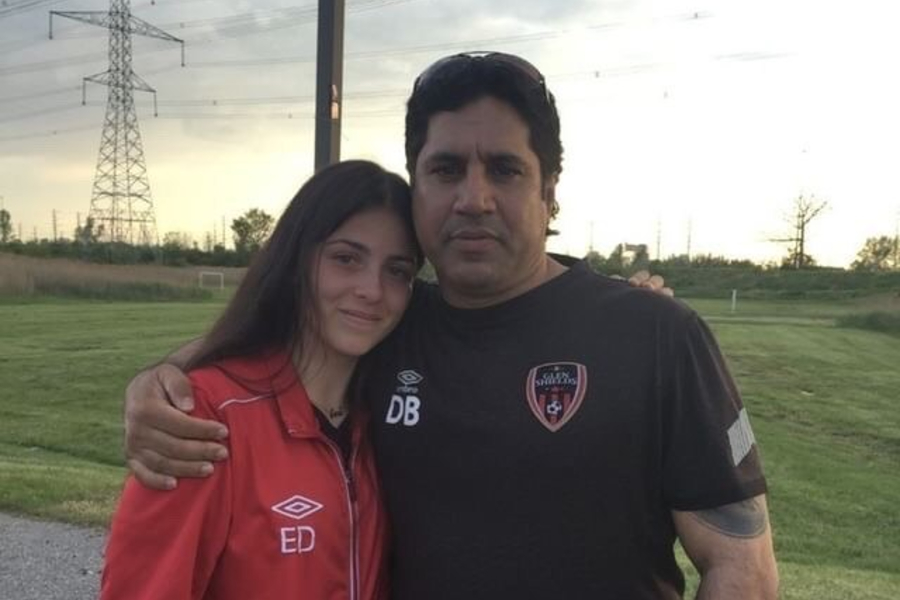 Eva Di Nallo and David Benning, her former Glen Shields coach, still keep in contact. She ended her soccer career playing for the North Toronto Futbol Club, after previously playing for Benning in the summer of 2017. (Supplied by Linda Di Nallo/T•)
Eva Di Nallo and David Benning, her former Glen Shields coach, still keep in contact. She ended her soccer career playing for the North Toronto Futbol Club, after previously playing for Benning in the summer of 2017. (Supplied by Linda Di Nallo/T•)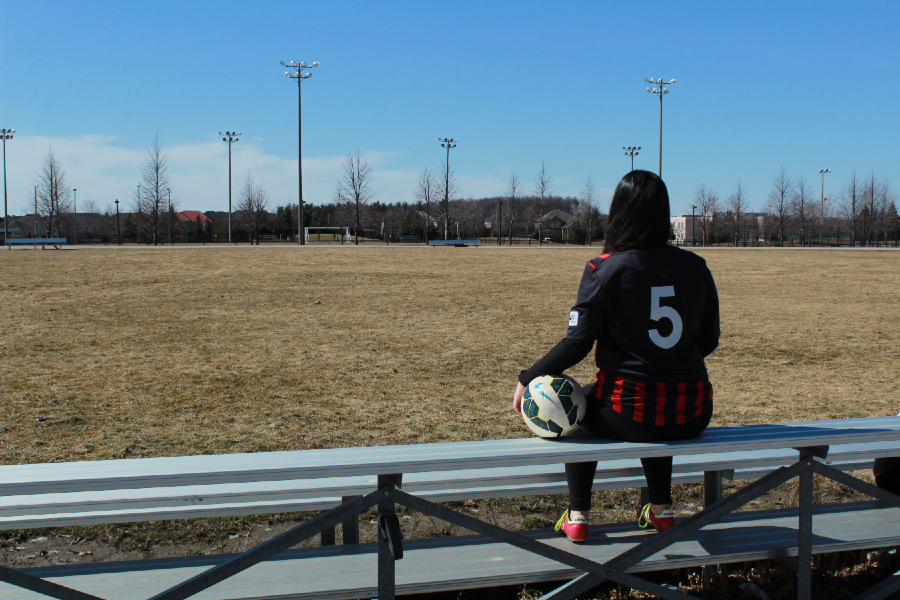 Di Nallo looks out at the empty grass field from the metal bleachers. She hopes to keep soccer in her life by coaching children in Woodbridge, Ont., on Monday, March 15, 2021. (Mikaila Taliana/T•)
Di Nallo looks out at the empty grass field from the metal bleachers. She hopes to keep soccer in her life by coaching children in Woodbridge, Ont., on Monday, March 15, 2021. (Mikaila Taliana/T•)
Di Nallo suffered her eighth and final concussion at 17, during a women’s under-21 league game at a University of Toronto field.
Following her 10-week recovery, she continued to play until her symptoms became more severe than ever. Her vision was blurring and her headaches turned into what the doctors called ice pick headaches __ where it literally felt like she was being stabbed with an ice pick.
After yet another visit to the doctor, an MRI discovered an “unknown artifact” in her brain. The specialists knew it was not a tumour or an aneurysm, but they think it may have developed from a possible unknown stroke she had as a child.
After a tough discussion with her doctor and parents, it was agreed playing soccer was too dangerous. “I think that when that doctor said, ‘I am not giving you your letter of clearance,’ I think Eva was shocked, she froze,” her mother, Linda, says with downcast eyes.
Conflicted, Di Nallo turned for advice to David Benning, her former coach during her time at Glen Shields. Ultimately, his suggestion was the same.
“As hard as it was, we had to explain to her that more time is necessary,” says Benning.
She received MRIs every six months to monitor the growth. In her last scan in September 2020, it was no longer there. Her follow-ups are now annually.
To this day, she suffers back and neck pain, strained eyes and migraines. By wearing her glasses, and limiting her screen time, which can be difficult because of school, she is able to keep her symptoms under control. However, she worries about developing possible brain complications as she gets older.
Inspired by her past, Di Nallo founded a non-profit organization that raises awareness on all things related to the brain. In August 2020, the B.R.A.I.N.S. Project was born.
Along with tips and fun facts about brain safety and mental health on social media, the project shares the personal stories of team members and others from the B.R.A.I.N.S. community.
Each week the project’s team discusses new ideas and ways to broaden their outreach. The team was first comprised of Di Nallo’s family and friends, but it has since expanded and continues to welcome newcomers.
Looking ahead, Di Nallo’s full focus remains on her health, expanding her project and, one day, attending medical school. Her concussions drive her to share her experiences, in hope of assisting others.
“That is why I really started B.R.A.I.N.S.,” she says, smiling from ear to ear. “I want to change people’s lives or make small steps on the way to doing so.”

